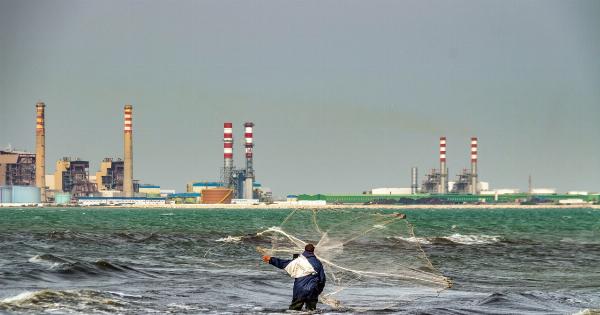Fatty fishery, characterized by high fat content and rich omega-3 fatty acids, plays a crucial role in maintaining the balance of marine ecosystems and providing essential nutrients to human populations worldwide.
However, recent trends indicate a decline in the health of these important fish species, raising concerns about the future sustainability of both the fishery and the ecosystem as a whole. In this article, we will explore the factors contributing to the diminishing health of fatty fishery, their potential consequences, and the importance of implementing sustainable fishing practices and marine conservation measures.
1. Overfishing
One of the primary drivers behind the diminishing health of fatty fishery is overfishing. The increasing demand for fish, particularly for popular species such as salmon, tuna, and mackerel, has led to excessive fishing pressure on these populations.
Overfishing occurs when fish are captured at a rate that exceeds their ability to reproduce and replenish their numbers. As a result, the population sizes of many fatty fish species have significantly declined, jeopardizing their overall health and resilience.
2. Climate Change
Global climate change is another significant factor influencing the health of fatty fishery.
Rising sea temperatures, ocean acidification, and changes in water chemistry, circulation patterns, and nutrient availability can have profound impacts on fish populations. These environmental changes can affect the ability of fish to find food sources, reproduce, and withstand diseases, ultimately compromising their health and survival.
Additionally, climate change can alter the distribution and migration patterns of fish, leading to potential shifts in their habitat range and availability.
3. Habitat Destruction
The destruction and degradation of critical fish habitats, such as coral reefs, mangroves, and seagrass beds, pose a severe threat to the health of fatty fishery.
These habitats serve as nurseries and feeding grounds for many fish species, providing essential shelter and food resources during different life stages. However, activities such as coastal development, pollution, bottom trawling, and destructive fishing practices can lead to habitat destruction, fragmenting these vital ecosystems and reducing the availability of suitable habitats for fish.
Without healthy habitats, fish populations struggle to thrive and maintain their overall health.
4. Pollution
Pollution, both chemical and plastic, significantly impacts the health of fatty fishery.
Chemical pollutants, such as heavy metals, pesticides, and industrial waste, can accumulate in the tissues of fish, leading to various health issues, including organ damage, reproductive impairments, and weakened immune systems. Plastic pollution, on the other hand, poses a direct threat to fish populations through entanglement, ingestion, and the release of harmful chemicals in the marine environment.
These pollutants have detrimental effects on fish health and can ultimately affect the quality and safety of fish consumed by humans.
5. Invasive Species
The introduction of non-native, invasive species into marine ecosystems has been a growing concern in recent years.
Invasive species can outcompete native fish species for resources, disrupt food chains, and alter the structure and functioning of ecosystems. These changes can have direct implications for the health of fatty fishery by potentially reducing the availability of suitable habitats, food sources, and altering the dynamics of predator-prey relationships.
Moreover, the introduction of diseases by invasive species can further compromise the health and resilience of native fish populations.
6. Importance of Sustainable Fishing Practices
To address the diminishing health of fatty fishery and ensure the long-term sustainability of these species, the implementation of sustainable fishing practices is paramount.
Sustainable fishing practices involve setting catch limits, implementing size restrictions, using selective fishing gear, and establishing marine protected areas. These measures aim to allow fish stocks to replenish, reduce bycatch and habitat destruction, promote responsible fishing practices, and ensure the overall health of fish populations.
By adopting sustainable fishing practices, we can minimize the negative impacts on fatty fishery and maintain the ecological balance of marine ecosystems.
7. Role of Marine Conservation
Marine conservation plays a crucial role in protecting and restoring the health of fatty fishery.
Conservation initiatives focused on the preservation of critical habitats, the establishment of marine protected areas, and the enforcement of regulations against illegal fishing can contribute significantly to the recovery and sustainability of fish populations.
By safeguarding essential feeding and spawning grounds, as well as reducing human-induced threats, marine conservation efforts provide a more favorable environment for fish to flourish, ensuring the continuity of fatty fishery and the overall well-being of marine ecosystems.
8. Consequences for the Ecosystem
The diminishing health of fatty fishery can have far-reaching consequences for the overall health and functioning of marine ecosystems.
Fish play vital roles in ecosystem dynamics by controlling prey populations, cycling nutrients, and contributing to the structure and stability of food webs. As the health and abundance of fatty fish populations decline, these ecosystem processes may become disrupted, leading to imbalances and cascading effects that can impact other species and ecosystem services.
The loss of fatty fish, with their high fat content and omega-3 fatty acids, can also have implications for the health of predators and human populations that rely on fish as a significant source of nutrition.
9. The Human Connection
The diminishing health of fatty fishery not only affects the ecosystem but also has socioeconomic implications for human populations, particularly coastal communities heavily reliant on fishing for food security and economic livelihoods.
In many regions, fishing provides a critical source of income, employment, and cultural identity. The decline of fatty fish species can lead to economic hardship, job losses, and food insecurity, disproportionately affecting vulnerable communities that depend on fishery resources for survival.
Protecting the health of fatty fish species is not only crucial for the environment but also for the well-being and resilience of these communities.
10. The Way Forward
To address the diminishing health of fatty fishery and ensure its long-term sustainability, a multi-faceted approach is needed.
This approach should include the implementation of sustainable fishing practices, marine conservation measures, and global cooperation to address climate change and reduce pollution. Government agencies, conservation organizations, fishing industries, and consumers all play a crucial role in driving positive change.
By making informed choices, supporting sustainable fisheries, reducing plastic waste, and advocating for stronger regulations, individuals can contribute to the recovery and preservation of the health of fatty fishery for future generations to enjoy.






























